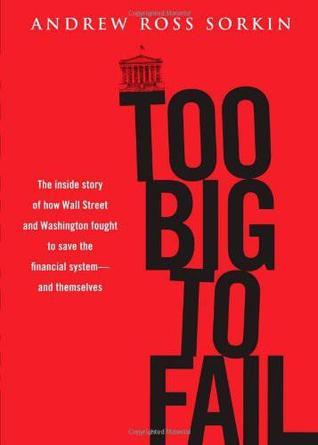More on this book
Community
Kindle Notes & Highlights
Read between
January 26 - February 3, 2015
For their troubles, Flowers and Fox-Pitt would earn a combined $20 million in fees, $15 million of which was contingent on the conclusion of the deal. Not bad for less than a week’s work.
Geithner and Warsh set up a conference call to coordinate their efforts with Bair, the fifty-four-year-old chairwoman of the FDIC and one of their least favorite people in government. They had always regarded Bair as a showboat, a media grandstander, a politician in a regulator’s position whose only concern was to protect the FDIC, not the entire system. She was not, in their view, a team player. Geithner would frequently commiserate about Bair with Paulson, who shared a similar perspective about her. At times, Paulson had a genuine respect for her. “She comes to play,” he regularly said to
...more
At 4:00 a.m. Steel got the answer he had been dreading. Bair phoned to notify him that his bank had been sold to Citigroup by the government for $1 a share. The FDIC wouldn’t be completely wiping out shareholders, she said; she had succumbed to pressure from Geithner and agreed to guarantee Wachovia’s toxic assets after Citigroup accepted the first $42 billion of losses, declaring that the firm was “systemically important.”
The real question about Goldman’s success, which could be asked about other firms as well, is this: How should regulators respond to continued risk taking—which generates enormous profits—when the government and taxpayers provide an implicit, if not explicit, guarantee of its business? Indeed, in Goldman’s second quarter of 2009, its VaR, or value at risk, on any given day had risen to an all-time high of $245 million. (A year earlier that figure had been $184 million.) Goldman’s trades have so far paid off, but what if it had bet the wrong way? For better or worse, Goldman, like so many of
...more
The report did, however, include some new revelations that could still lead to government action. Its most interesting and controversial discovery concerned an accounting practice called Repo 105, which the public was learning about for the first time. As the report explained it, “Lehman did not disclose . . . that it had been using an accounting device (known within Lehman as ‘Repo 105’) to manage its balance sheet—by temporarily removing approximately $50 billion of assets from the balance sheet at the end of the first and second quarters of 2008. . . .Lehman’s own accounting personnel
...more


